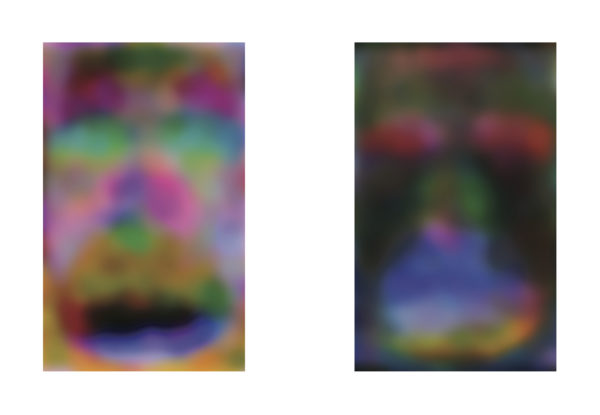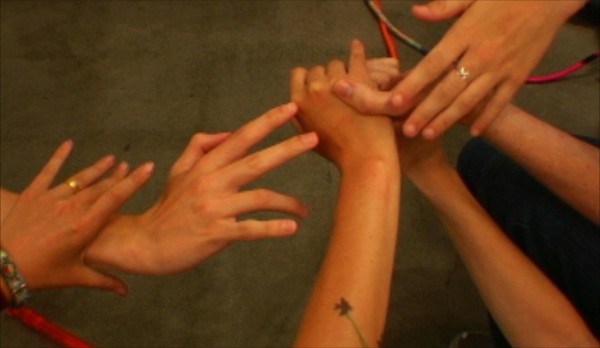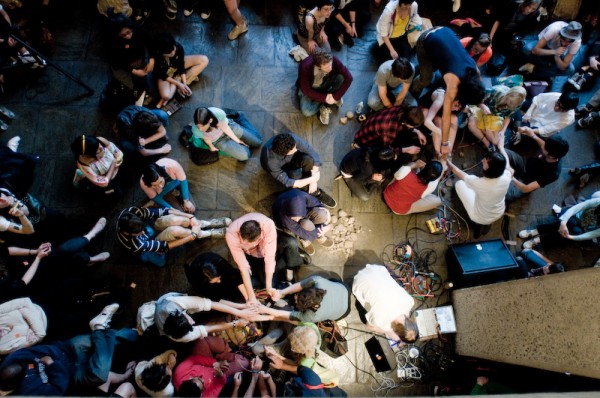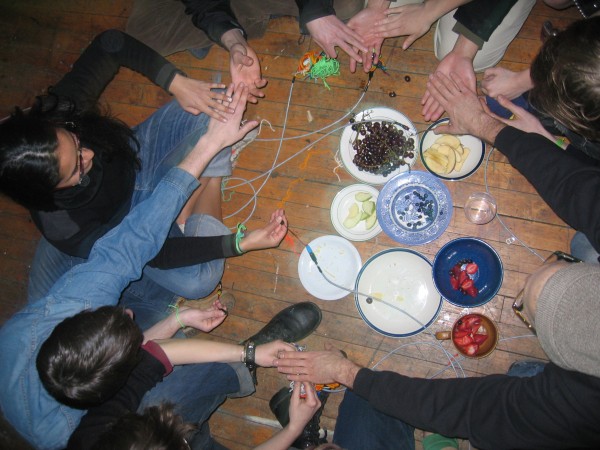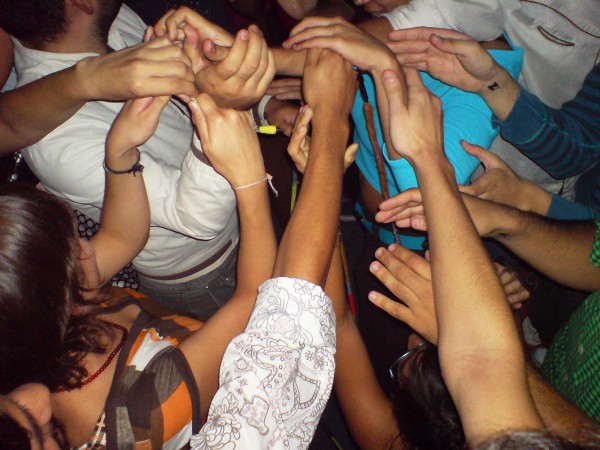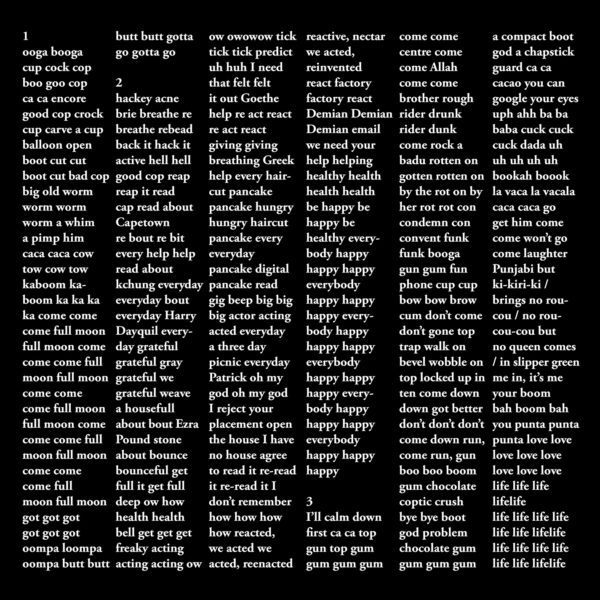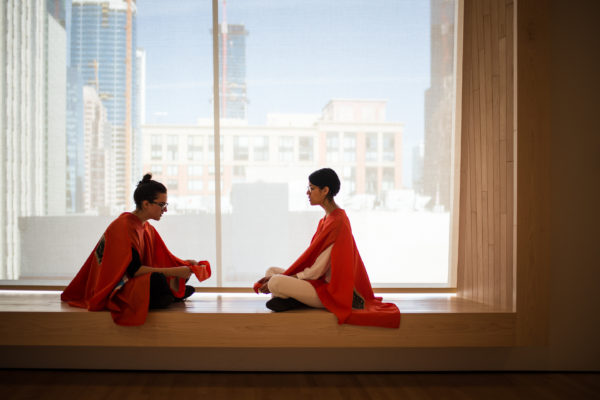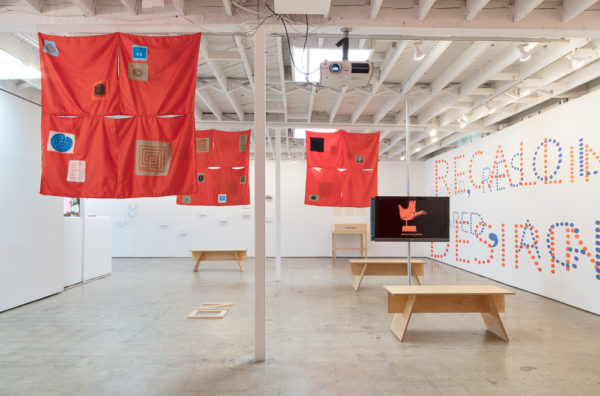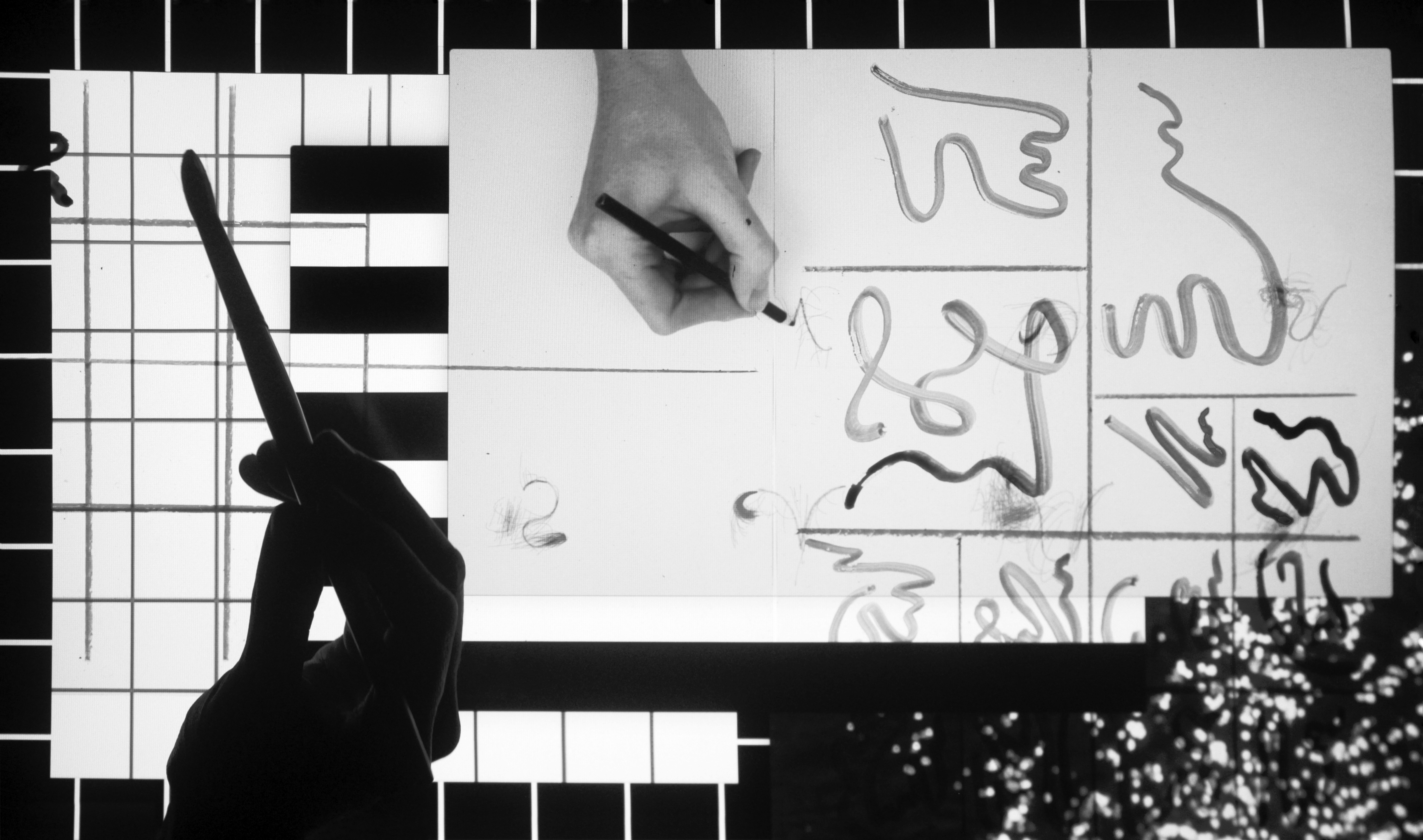On the other side of the Pattern is the The Tangle. The Tangle is an enormous, unruly confusion. There is a critical urgency to untangle the tangle. This is a process that will require all people to cooperate with one another. The Tangle imagines Peace-Making as struggle, a form of active problem-solving: “Negative Peace.”
Negative Peace is the absence of direct violence, the prevention of harm, the prevention of war. Peace within this framework does not, by itself, erase conflict completely or permanently. Negative Peace is constant in its management of conflict. Negative Peace is the process of struggle. In the struggle to untangle The Tangle, we strategize and cooperate, we develop and share innovative techniques, new ways of seeing and solving the problem. Factions may evolve from within the struggle—some participants see more value in Tangling than in Untangling—opposing affinities form in dissent. There is fine line between tangling and untangling. Fine lines can be difficult to draw—conscious tanglers are difficult to separate from conscious un-tanglers. Their movements are similar. The Tangle is a path between persons, a language for the recognition and mediation of conflict. The Tangle addresses itself to all of us—now that it exists, it can’t ever stop existing. If the Tangle becomes untangled it may swiftly become tangled again, without our constant management and vigilance. Calm and alert. We are complicit in solving the problem of The Tangle. Whether or not we see ourselves as participants, it doesn’t matter. There is no neutral place. There is no self in isolation. The Tangle addresses itself to all of us.
Thought and action.
Stem the flow of unhappiness.
Use dialogue to create solidarity.
Inform and concern.
Peace for the sake of peace
For the sake of peace.
What inhibits the world from inventing peace? who inhibits the world from inventing peace? Violence, proscribed by strong central powers, held comfortably in place by allegiance to a group, by the naming of a population: Otherizing. Drawing the conditions for aggression, race war, class war, national war. Who is that person? and who is that person? and who is that person? Rousseau pointed out that If we had no sovereign states, we would have no war. Hobbes pointed out that we would have no peace either. William Graham Sumner wrote “if you want war, nourish a doctrine. Doctrines are the most frightful tyrants to which men are ever subject, because doctrines get inside a man’s own reason and betray him against himself. Civilized men have done their fiercest fighting for doctrines. The reconquest of the Holy Sepulchre, the balance of power, no universal dominion, trade follows the flag, he who holds the land holds the sea, the throne and the altar, the revolution, the faith— these are the things for which men have given their lives. What are they all?” What makes doctrine? What make doctrine reasonable? believable? How to un-make doctrine? How to loosen the hold of doctrine on oneself? (what is) the most beautiful word? what are some variations? can you be more specific? Would you prefer not to? ask me? have you met? and have you met? and have you met? wait what happened earlier? do you agree? how many agree? how many disagree? is this a good balance? “Doctrines are always vague; it would ruin a doctrine to define it, because it could be analyzed, tested, criticized, and verified; but nothing ought to be tolerated which cannot be so tested.”
Thought and action
Stem the flow of suffering
Use dialogue to create solidarity
Inform and concern
Peace for the sake of peace
For the sake of peace
Law only needs precedent. One premise for the rule of international law is that all persons participate in a single community, and as such, are subject to the same common law. Rights and values, having been articulated and refined through history, are acquired by the community in a process of consistent reasoning. The greater the consistency, the stronger the law. By what authority? With what permission? And who will decide? Laws between sovereign states are, like manners, difficult to enforce. Politics must be polite, or there is no recourse but to dissociate. Failing to honor a treaty, allowing the agreement to collapse, a state loses access to the process of peace. Meaningful relationships cannot be established or repaired. Agreement becomes impossible. The scope of this impossibility is made legible in The Treaty of Versailles, ending World War I: “Without this healing act the whole structure and validity of international law is forever impaired.” The Universal Declaration of Human Rights, one outline of the path to peace, exists as a treaty between all persons. It orders human lives by suggesting a structure that embraces everyone, a rule of law to which all can appeal. The right to have a nationality, to belong to a state, builds peace through structured, universal representation. Can Peace be universal? Or is peace specific? Can it embrace humankind or only the detached individual? In America, we reserve the right to refuse to belong to this or any other state. We have laws to aid our escape from law. Margaret Mead wrote that “Warfare is an invention like any other of the inventions in terms of which we order our lives: marriage, cooking our food instead of eating it raw, trial by jury, or burial of the dead, and so on” What is the next invention that will shift the order of human lives? Can it be peace? “A form of behavior becomes out of date only when something else takes its place, and, in order to invent forms of behavior which will make war obsolete, it is a first requirement to believe that the invention is possible.”
Thought and action
Stem the flow of violence
Use dialogue to create solidarity
Inform and concern
Peace for the sake of peace
For the sake of peace
Submerged in suffering
find tranquility in reasoned judgements
In world of learning
Remember the possible functions of machines?
Inventing things that can only be made with tools that don’t exist?
Are you an inventor?
Words, a healing breeze, or a sword, forms a new peace agenda: The invention of non-violent
How to redraw the abstraction of Enemy?
Acknowledge fear, stereotype, and distortion
Dissolve negative attachment to difference
Join conversation without hesitation
How does War form its own culture?
We are wasting time, resources, and energy. How much better would it be to only waste time, to become inefficient, to move slowly, with consideration, to space out, to stare, to examine closely, to imagine broadly, to search the ruins.
Thanatos the death instinct
and Eros the life instinct
Repulsion and attraction
Johan Galtung wrote that “Imperialism is a species in a genus of dominance and power relationships.” If dominance relations between nations and other collectivities will not disappear when Imperialism disappears—then how to disappear the root, the relationships that holds oppression comfortably in place? Imperialism splits up collectivities in terms of harmony of interest, disharmony of interest, and conflict of interest. There is, first of all, a gap. In imperialism the center grows more fully than the periphery. The center is enriched and nourished, while the periphery is starved. We must ask how to grow the periphery, how to transfer value, how to confuse, dissolve or multiply the center, and how to harmonize the whole? This is a problem of reality—of seeing the real—of becoming real—of realization. When image and reality do not align, but appear to align, we convince ourselves that image and reality align, a face and a mirror. We are a problem solver. We are looking at images that flip—seen upside down or sideways they un-fool the eye.”
(read less)

















